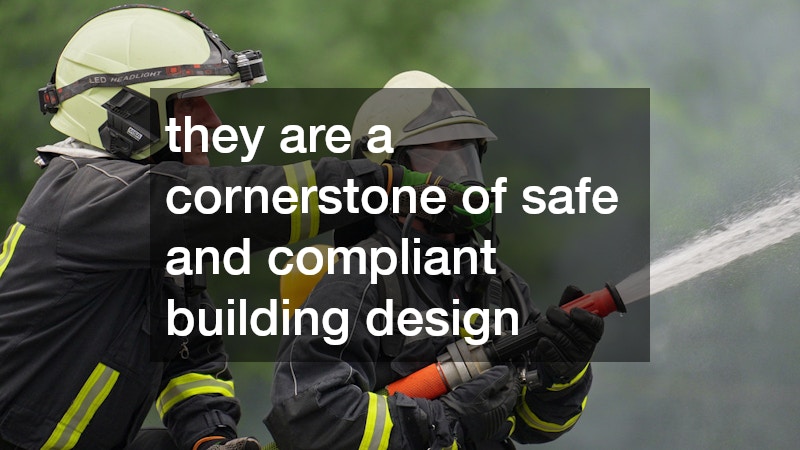In commercial and residential building projects, life safety systems are a top priority—and fire sprinkler systems are among the most critical. However, effective sprinkler systems don’t just rely on high-quality materials or installation; they depend heavily on accurate design documentation. That’s where Fire Sprinkler CAD Details play a key role. These details ensure that fire protection is thoroughly integrated into a building’s layout, helping to save time, reduce errors, and ultimately protect lives.
Accurate Layouts Prevent Costly Installation Errors
One of the main benefits of using the CAD Details is the accuracy they bring to system layout and installation. A well-prepared CAD drawing includes precise pipe routing, head locations, hanger spacing, valve placements, and connection points to the main water supply.
Without this level of detail, installers are forced to make decisions on-site, often under pressure, which increases the likelihood of errors, rework, and code violations. Even a single misplaced sprinkler head can result in coverage gaps, jeopardizing the system’s effectiveness. Detailed CAD plans eliminate ambiguity, ensuring every component is correctly positioned before construction begins.
Coordination with Other Building Systems
Modern construction projects involve the integration of multiple mechanical, electrical, and plumbing (MEP) systems. Fire sprinkler systems must coexist with HVAC ductwork, lighting, structural supports, and more. Overlaps can create space conflicts that delay projects and increase costs.
Fire Sprinkler CAD Details allow fire protection engineers to coordinate their designs with architects, mechanical engineers, and structural teams. By using 3D modeling or BIM-compatible CAD files, teams can detect and resolve clashes before construction starts. This integrated approach improves workflow, enhances safety, and prevents issues like blocked sprinkler coverage or obstructed piping.
Compliance with Fire Codes and Standards
Building codes and fire protection standards such as those set by NFPA (National Fire Protection Association) require strict compliance in fire sprinkler design. These codes cover everything from pipe sizing and water pressure to sprinkler head spacing and placement.
Accurate Fire Sprinkler CAD Details are often reviewed by fire marshals and local authorities having jurisdiction (AHJs) to ensure compliance before permits are issued. A clear, well-organized CAD plan simplifies this review process and reduces the risk of rejection or delay. It also helps the installation team follow the design precisely, ensuring that the finished system meets all regulatory requirements.
Better Maintenance and System Modifications
After a building is completed and occupied, fire sprinkler systems must be maintained and, over time, may need modifications due to tenant changes, renovations, or occupancy updates. When these situations arise, having access to comprehensive Fire Sprinkler CAD Details is invaluable.
Technicians can quickly assess system layouts, identify shut-off valves, and determine coverage areas without needing to conduct extensive exploratory work. This reduces downtime, speeds up maintenance efforts, and ensures that safety systems continue to function effectively throughout the life of the building.
Improved Safety Documentation for Emergency Response
In emergency situations, such as fires or earthquakes, first responders often rely on building plans to understand system layouts and risks. The Sprinkler CAD Details offer critical insights into how the sprinkler system is designed to perform during emergencies.
Having these details on file, accessible either digitally or in hard copy, helps fire departments quickly determine how to support or disable sprinkler systems, identify main control valves, and protect responders and occupants alike. In large or complex facilities, clear documentation can make the difference between effective response and costly delay.
Facilitating Inspections and Quality Control
Fire sprinkler systems undergo rigorous inspection and testing both during and after installation. Inspectors look for coverage, hydraulic performance, pipe slope, head clearance, and more. Having complete Fire Sprinkler CAD Details available allows inspectors to cross-reference the field installation against the approved plans.
This documentation also serves as a checklist for quality assurance teams to verify that materials, dimensions, and flow calculations match what was submitted. Any discrepancies can be flagged and resolved before final sign-off, reducing liability and ensuring system readiness.
While it may be tempting to view design documentation as just another project requirement, the Sprinkler CAD Details are far more than administrative paperwork—they are a cornerstone of safe and compliant building design. From planning and coordination to installation and emergency response, these technical drawings ensure that every component of a fire suppression system is accurate, reliable, and ready to perform under pressure.




